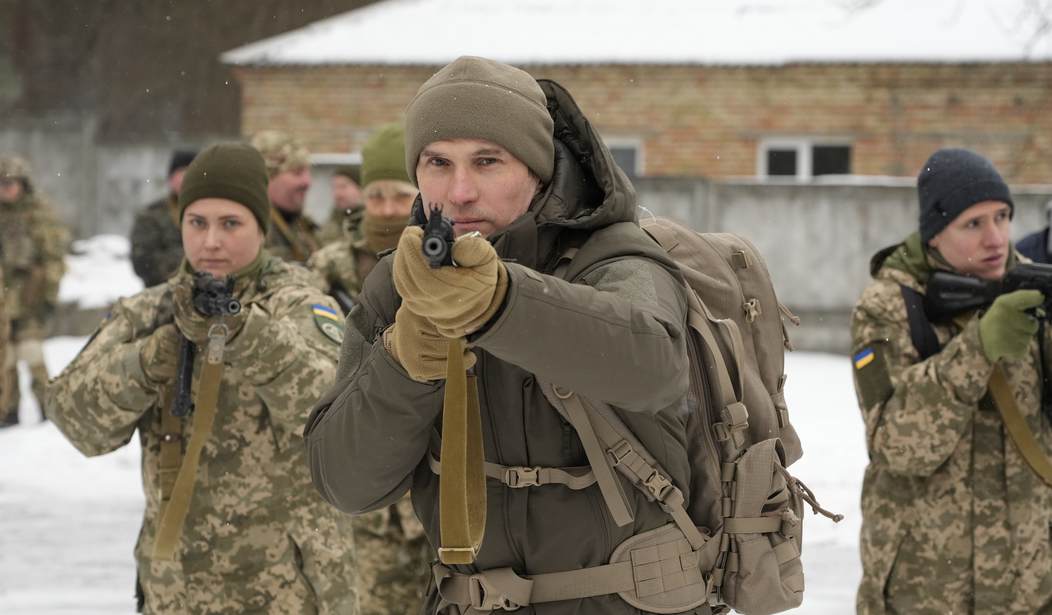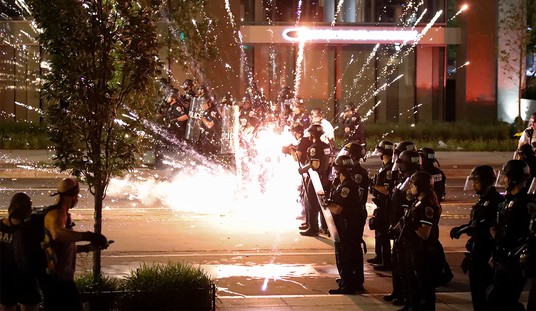There’s no fog so thick as the fog of war that surrounds maps of the battlefield. Each side has incentives to exaggerate the amount of territory it controls; there’s no way to verify their claims in the middle of a hot war; and even if they could be verified, the tide of battle means that the map will be outdated within hours.
So take the following with even more grains of salt than you normally would.
That said, there *is* reason to believe Ukrainian claims of a widespread Russian retreat in the north, especially around Kiev. Ukraine launched a counteroffensive in the region last week aimed at pushing the Russians back, and Russia itself coincidentally announced a few days later that it would redeploy from Kiev and focus henceforth on securing the Donbas in the east. We’d expect the Ukrainians to be recovering territory in the north if all of that were true.
If you believe these maps, they’re recovering territory in the north. Lots of it. And in some places, they may even have Russian troops cut off.
Russian forces around Kyiv are retreating en masse, leaving behind wrecked armour and possibly trapped pockets of troops as the Ukrainian army advances.
This map shows settlements confirmed recaptured today (blue) and yesterday (yellow).
The siege of Chernihiv is also lifted. pic.twitter.com/eINXgPpyJr
— Nathan Ruser (@Nrg8000) April 1, 2022
In the last week, in northern Ukraine, the highway to two regional capitals has been cleared of Russian forces, and they have been largely pushed back from the exurbs of Kyiv. This gif shows the change in territorial control between last friday and today. pic.twitter.com/Jw0TSKJfNk
— Nathan Ruser (@Nrg8000) April 1, 2022
I agree with the @Liveuamap assessment, in the east of Kyiv, the Russians have been pushed back past Nova Basan pic.twitter.com/g12ZJIs8h3
— OSINTtechnical (@Osinttechnical) April 1, 2022
The Battle of Kyiv 2022 has ended with Russian defeat.
Period. Turning the page.
Now the grand Battle of Donbas is what lies ahead. pic.twitter.com/qzfm9iWkK8— Illia Ponomarenko 🇺🇦 (@IAPonomarenko) April 1, 2022
Truth or Ukrainian propaganda? Michael Kofman is a respected analyst of Russian military capabilities and he thinks the retreat is real:
I think Russian units began withdrawing earlier than we might appreciate. I will note another potential input/output problem. Take note if the 40 mile 'stuck' convoy, which it never was, ends up withdrawing within the coming days. Worth following that situation.
— Michael Kofman (@KofmanMichael) April 1, 2022
Ukrainian sources are also trumpeting Russian retreat from the area. If they’re lying, I’m not sure what they gain from the lie. They’ll be humiliated if we find out tomorrow that Kiev is under attack or under siege from a heavy Russian troop presence that’s still in the area:
#BREAKING Head of #Kyiv regional administration says #Russia|n forces have left Hostomel area
— Guy Elster (@guyelster) April 1, 2022
Russians are retreating form Kyiv Oblast en masse.
Bucha, Hostomel and tens of other towns and villages are now under the Ukrainian flag.
A decisive loss for Russia near Kyiv.
— Oleksiy Sorokin (@mrsorokaa) April 1, 2022
There’s even a photo reportedly taken in a town northwest of the capital of residents celebrating their liberation from Russian rule:
People in Ivankiv, Kyiv region, showing gratidude to Ukrainian troops who rescued their town. It's been occupied since the very first day of war. pic.twitter.com/mDlbMyFk75
— Iuliia Mendel (@IuliiaMendel) April 1, 2022
Zelensky is also alluding to a Russian retreat in a new video. Would he stake his own credibility on that fact if he had reason to doubt it?
Zelensky speaks of the strength and endurance of Ukrainians in latest late night address but also that Russia is “moving away from areas where we are beating them to focus on others that are very important. On those where it can be difficult for us.” pic.twitter.com/OmOWZvwSYf
— Christopher Miller (@ChristopherJM) March 31, 2022
Russia said it was going to pivot away from Kiev and the north and now there are widespread reports of them pivoting away from Kiev and the north. There’s a burning mystery over how much of that “pivot” was a deliberate strategic decision and how much of it was forced on them by ferocious Ukrainian resistance but the fact that the pivot is happening seems undisputed at the moment.
There are some good reads (mostly paywalled, alas) floating around today about Russia’s battlefield problems. U.S. officials point to the remarkable fact that there’s no single commander on the Russian side overseeing the military’s various offensives, which explains why land and air operations have had trouble coordinating. The generals apparently running the show, Sergei Shoigu and Valery Gerasimov, are hundreds of miles away in Russia and are unable to respond quickly to the latest battlefield developments. And because Russian officers are taught never to make a move without orders from a superior, they’re unable to respond quickly either. Quote: “This top-down approach means that Moscow transmits instructions to generals in the field, who then transmit them to troops, who are told to follow those instructions no matter the situation on the ground.”
This may explain how the Ukrainians were able to target that Russian ship near Mariupol last week, notes the Times. Because Russia’s left hand doesn’t know what its right hand is doing, the ship was allowed to dock in a port that was unsecured.
Dispersed, disorganized leadership also helps explain Russia’s now infamous logistical difficulties. This WSJ piece does a superb job of explaining in layman’s terms how confounding it can be to try to keep an army supplied, especially one like Russia’s that relies heavily on transport by rail. Denied that ability within Ukraine, the Russians are being forced to do things via truck, which requires coordination. But as noted above, coordination is sorely lacking. “That means that the three operational commanders [in the north, south, and east] are relying on themselves for supply and competing between themselves for resources,” said one analyst. Read that again.
Even if a commander manages to gain priority over his colleagues for supplies, there are problems:
With little evidence that Russian forces established their own supply dumps inside Ukraine, resupply trucks had to shuttle long distances back and forth, themselves needing to refuel. Clips on social media also show much of this equipment was poorly maintained, perhaps coming out of yearslong storage.
“If one truck shows up and fuels three or four vehicles and then turns around and goes back, I don’t know how long you think you can do this,” said Mr. Boston. The farther the journeys, the more challenging the refueling—particularly when supply lines haven’t been secured.
Military analysts say there are special challenges to supplying heavily motorized forces like the Russians have extensively deployed in Ukraine. While Russian tanks in Ukraine are generally lighter than their Western counterparts, their tracked vehicles aren’t fuel efficient—increasing the challenge of keeping them active.
While fuel consumption will depend on speed and terrain, tanks are huge gas guzzlers. Mr. Boston says that, as a rough estimate, a T-72B variant tank—the workhorses in Ukraine—would use 5.8 gallons per hour just to idle, and 1 mile a gallon or significantly less when moving.
Compounding the difficulty of keeping tanks gassed up is the fact that artillery is heavy and Russian commanders prioritize resupplying ammunition over fuel for vehicles in the field. Those artillery trucks soak up some gasoline that might otherwise go to tanks as well while pushing fuel trucks further back in the supply queue. Result, according to Boston: Some meaningful number of Russian tanks are likely being lost not because the Ukrainians are taking them out but because they’re simply out of gas and have no near-term prospect of being resupplied. If you’ve seen the videos on social media of Ukrainian tractors hauling away with appears to be fully intact Russian tanks and wondered how the farmers managed to get hold of them, now you know. In all likelihood, the tank couldn’t move and its crew abandoned it.
All of which may have “influenced” Russia’s apparent decision to cut bait in the north. Maybe supplying vehicles that far from the Donbas become too tricky and they concluded they couldn’t sustain it.
Speaking of which, read this thoughtful take on Russia’s coming pyrrhic victory (assuming it’s a victory at all) in eastern Ukraine. Moscow seems to have assumed that it would be welcomed as a liberator in the disputed territories and along the southeastern coast, in cities like Mariupol, given how many ethnic Russians live there. But Ukraine’s government spent millions in Mariupol since 2014 beautifying the city, evidently part of a hearts-and-minds campaign to reorient the locals towards prioritizing their Ukrainian identity over their Russian one. And Russia’s resort to Grozny tactics in Mariupol to subdue the resistance is destined to alienate all but the most pro-Russia residents in the east, making it that much harder to pacify the region and annex it. There’s no reason to think the coming battle in the east will be much easier for them than the one in the north was.








Join the conversation as a VIP Member